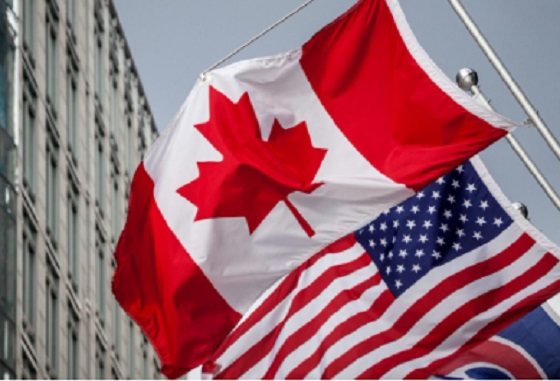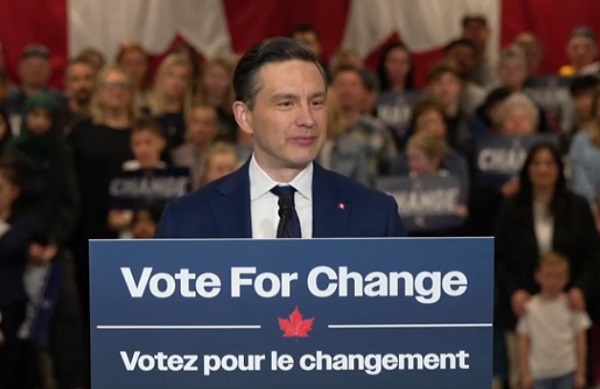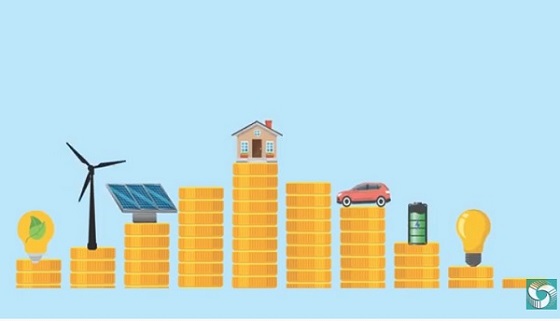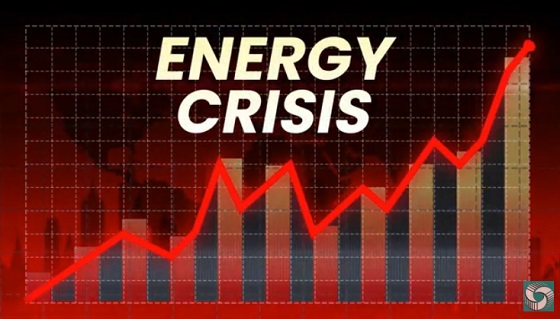Business
Canadian Energy Companies Look South For Growth

From EnergyNow.ca
By Heather Exner-Pirot
Enbridge’s announcement in September that it was acquiring three U.S.-based utilities for USD$14 billion saw Canada’s largest energy company also become North America’s largest gas utility. The deal is significant not only on its own merits, but as part of a bigger trend: Canadian energy companies that are looking for growth prospects are finding them south of the border.
The trend is not new. In 2016, Canadian utilities went on an American shopping spree. Fortis acquired ITC for USD$11.3 billion; Ontario-based Algonquin Power & Utilities Corp acquired Missouri-based Empire District Electric Company for USD$2.4 billion; and Nova Scotia-based Emera acquired Florida-based TECO in a USD$10.4 billion deal.
Pipelines were in the mix too, with TC Energy acquiring Columbia Pipeline Group, a gas transmission network, that year for USD$13 billion.
In 2017, Hydro One purchased U.S. power supplier Avista for USD $3.4 billion, and AltaGas took over WGL Holdings (which supplies natural gas to the White House) for USD $4.6 billion. More recently, TriSummit acquired the Alaska gas distribution, transmission, and storage assets of SEMCO Energy for US$800 million in March.
As such, the Enbridge utility megadeal can be seen less as a harbinger and more of a culmination.
What is behind this Canadian appetite for American utilities and pipelines? At one level, it is a response to the inherent limitations of the Canadian utilities sector, which is heavily regulated and often provincially owned. Add in Ottawa’s torrent of climate policies aiming to cut growth in Canadian oil and gas, and pastures look greener elsewhere.
But it also speaks to the confidence the sector’s biggest players have in the long term prospects for natural gas. The Dominion deal adjusts Enbridge’s earnings from a 60-40 mix between crude oil & liquids, and natural gas & renewable energy respectively, to something closer to a 50-50 split. Enbridge, like many energy companies, is betting on natural gas being a bridge fuel in the energy transition rather than being phased out. And whatever fuel mix we use in the future, it will require pipelines and distribution, whether in the form of natural gas, renewable natural gas (RNG), hydrogen or otherwise.
“…it also speaks to the confidence the sector’s biggest players have in the long term prospects for natural gas.”
Two phenomena are worth emphasizing here. The first is that the United States is seen as a jurisdiction for growth; Canada, not so much. Our biggest energy companies are expanding to the south, but the reverse is not true. Enbridge and TC Energy are leading the way, but Cenovus, Cameco, Hydro-Québec and others are also making moves, on top of the long list of utilities above.
This is not just anecdotal. According to the U.S. State Department,1 Canadian foreign direct investment (FDI) in the United States was about 26% higher than their reciprocal FDI in 2022, or USD$528 billion compared to their USD$406 billion. This is part of a broader trend that has been worsening since 2014. In that year, Canadian investment abroad was only about CAD$100 billion more than foreign investment in Canada. By 2022 the imbalance had grown to a whopping CAD$725 billion.2 Canadian companies are generating wealth; they are just generating a smaller proportion of it at home.
The second is that the Canadian and American energy markets are highly interdependent, and growing more so. In fact, 2022 saw record energy trade between our two countries, reaching USD$190 billion, almost triple what it was in the throes of the COVID-19 pandemic, and beating the last high water mark of USD$178 billion in 2008. From natural gas and liquids pipelines to refineries and electricity grids, fundamentally we have a single North American energy system.
As such, we should be developing and coordinating energy and climate policy much more closely. It is inefficient, not to mention painful for the energy sector, when Canada and the United States – and many provinces and states on top of that – propose substantially different standards, goals, and regulations. Energy is an area that needs closer policy collaboration and alignment between our two nations in order to achieve sustainability, reliability and affordability of supply.
This need is manifesting itself in a growing Canadian presence in the US capital. In the past year or so, TC Energy has established a policy team in Washington DC, and Cenovus and the Business Council of Canada have opened up offices there (as has my own think tank, the Macdonald-Laurier Institute). As entreaties to Ottawa fall on deaf ears, businesses are looking for reception elsewhere.
The Canadian energy sector is betting big on natural gas, be it through retail, pipeline transportation or LNG exports. Where possible, it’s betting on Canada too. But the United States and other markets are where growth is on offer.
We should all celebrate the success of Canadian companies abroad. But we should be creating a policy and business environment that allows them to grow in our own back yard too.
Heather Exner-Pirot is the Director of Energy, Natural Resources and Environment at the Macdonald-Laurier Institute.
2025 Federal Election
As PM Poilievre would cancel summer holidays for MP’s so Ottawa can finally get back to work

From Conservative Party Communications
In the first 100 days, a new Conservative government will pass 3 laws:
1. Affordability For a Change Act—cutting spending, income tax, sales tax off homes
2. Safety For a Change Act to lock up criminals
3. Bring Home Jobs Act—that repeals C-69, sets up 6 month permit turnarounds for new projects
No summer holiday til they pass!
Conservative Leader Pierre Poilievre announced today that as Prime Minister he will cancel the summer holiday for Ottawa politicians and introduce three pieces of legislation to make life affordable, stop crime, and unleash our economy to bring back powerful paycheques. Because change can’t wait.
A new Conservative government will kickstart the plan to undo the damage of the Lost Liberal Decade and restore the promise of Canada with a comprehensive legislative agenda to reverse the worst Trudeau laws and cut the cost of living, crack down on crime, and unleash the Canadian economy with ‘100 Days of Change.’ Parliament will not rise until all three bills are law and Canadians get the change they voted for.
“After three Liberal terms, Canadians want change now,” said Poilievre. “My plan for ‘100 Days of Change’ will deliver that change. A new Conservative government will immediately get to work, and we will not stop until we have delivered lower costs, safer streets, and bigger paycheques.”
The ’100 Days of Change’ will include three pieces of legislation:
The Affordability–For a Change Act
Will lower food prices, build more homes, and bring back affordability for Canadians by:
- Cutting income taxes by 15%. The average worker will keep an extra $900 each year, while dual-income families will keep $1,800 more annually.
- Axing the federal sales tax on new homes up to $1.3 million. Combined with a plan to incentivize cities to lower development charges, this will save homebuyers $100,000 on new homes.
- Axing the federal sales tax on new Canadian cars to protect auto workers’ jobs and save Canadians money, and challenge provinces to do the same.
- Axing the carbon tax in full. Repeal the entire carbon tax law, including the federal industrial carbon tax backstop, to restore our industrial base and take back control of our economy from the Americans.
- Scrapping Liberal fuel regulations and electricity taxes to lower the cost of heating, gas, and fuel.
- Letting working seniors earn up to $34,000 tax-free.
- Axing the escalator tax on alcohol and reset the excise duty rates to those in effect before the escalator was passed.
- Scrapping the plastics ban and ending the planned food packaging tax on fresh produce that will drive up grocery costs by up to 30%.
We will also:
- Identify 15% of federal buildings and lands to sell for housing in Canadian cities.
The Safe Streets–For a Change Act
Will end the Liberal violent crime wave by:
- Repealing all the Liberal laws that caused the violent crime wave, including catch-and-release Bill C-75, which lets rampant criminals go free within hours of their arrest.
- Introducing a “three strikes, you’re out” rule. After three serious offences, offenders will face mandatory minimum 10-year prison sentences with no bail, parole, house arrest, or probation.
- Imposing life sentences for fentanyl trafficking, illegal gun trafficking, and human trafficking. For too long, radical Liberals have let crime spiral out of control—Canada will no longer be a haven for criminals.
- Stopping auto theft, extortion, fraud, and arson with new minimum penalties, no house arrest, and a new more serious offence for organized theft.
- Give police the power to end tent cities.
- Bringing in tougher penalties and a new law to crack down on Intimate Partner Violence.
- Restoring consecutive sentences for multiple murderers, so the worst mass murderers are never let back on our streets.
The Bring Home Jobs–For a Change Act
This Act will be rocket fuel for our economy. We will unleash Canada’s vast resource wealth, bring back investment, and create powerful paycheques for workers so we can stand on our own feet and stand up to Trump from a position of strength, by:
- Repealing the Liberal ‘No Development Law’, C-69 and Bill C-48, lifting the cap on Canadian energy to get major projects built, unlock our resources, and start selling Canadian energy to the world again.
- Bringing in the Canada First Reinvestment Tax Cut to reward Canadians who reinvest their earnings back into our country, unlocking billions for home building, manufacturing, and tools, training and technology to boost productivity for Canadian workers.
- Creating a One-Stop-Shop to safely and rapidly approve resource projects, with one simple application and one environmental review within one year.
Poilievre will also:
- Call President Trump to end the damaging and unjustified tariffs and accelerate negotiations to replace CUSMA with a new deal on trade and security. We need certainty—not chaos, but Conservatives will never compromise on our sovereignty and security.
- Get Phase 2 of LNG Canada built to double the project’s natural gas production.
- Accelerate at least nine other projects currently snarled in Liberal red tape to get workers working and Canada building again.
“After the Lost Liberal Decade of rising costs and crime and a falling economy under America’s thumb, we cannot afford a fourth Liberal term,” said Poilievre. “We need real change, and that is what Conservatives will bring in the first 100 days of a new government. A new Conservative government will get to work on Day 1 and we won’t stop until we have delivered the change we promised, the change Canadians deserve, the change Canadians voted for.”
Automotive
Canadians’ Interest in Buying an EV Falls for Third Year in a Row

From Energy Now
Electric vehicle prices fell 7.8 per cent in the last quarter of 2024 year-over-year, according to the AutoTader price index
Fewer Canadians are considering buying an electric vehicle, marking the third year in a row interest has dropped despite lower EV prices, a survey from AutoTrader shows.
Forty-two per cent of survey respondents say they’re considering an EV as their next vehicle, down from 46 per cent last year. In 2022, 68 per cent said they would consider buying an EV.
Meanwhile, 29 per cent of respondents say they would exclusively consider buying an EV — a significant drop from 40 per cent last year.
The report, which surveyed 1,801 people on the AutoTrader website, shows drivers are concerned about reduced government incentives, a lack of infrastructure and long-term costs despite falling prices.
Electric vehicle prices fell 7.8 per cent in the last quarter of 2024 year-over-year, according to the AutoTader price index.
The survey, conducted between Feb. 13 and March 12, shows 68 per cent of non-EV owners say government incentives could influence their decision, while a little over half say incentives increase their confidence in buying an EV.
-

 2025 Federal Election2 days ago
2025 Federal Election2 days agoStudy links B.C.’s drug policies to more overdoses, but researchers urge caution
-

 Business2 days ago
Business2 days agoIs Government Inflation Reporting Accurate?
-

 2025 Federal Election2 days ago
2025 Federal Election2 days agoCarney’s Hidden Climate Finance Agenda
-

 2025 Federal Election2 days ago
2025 Federal Election2 days agoWhen it comes to pipelines, Carney’s words flow both ways
-

 2025 Federal Election2 days ago
2025 Federal Election2 days agoPolls say Canadians will give Trump what he wants, a Carney victory.
-

 2025 Federal Election2 days ago
2025 Federal Election2 days agoThe Anhui Convergence: Chinese United Front Network Surfaces in Australian and Canadian Elections
-

 2025 Federal Election22 hours ago
2025 Federal Election22 hours agoPoilievre Campaigning To Build A Canadian Economic Fortress
-

 Automotive22 hours ago
Automotive22 hours agoCanadians’ Interest in Buying an EV Falls for Third Year in a Row





